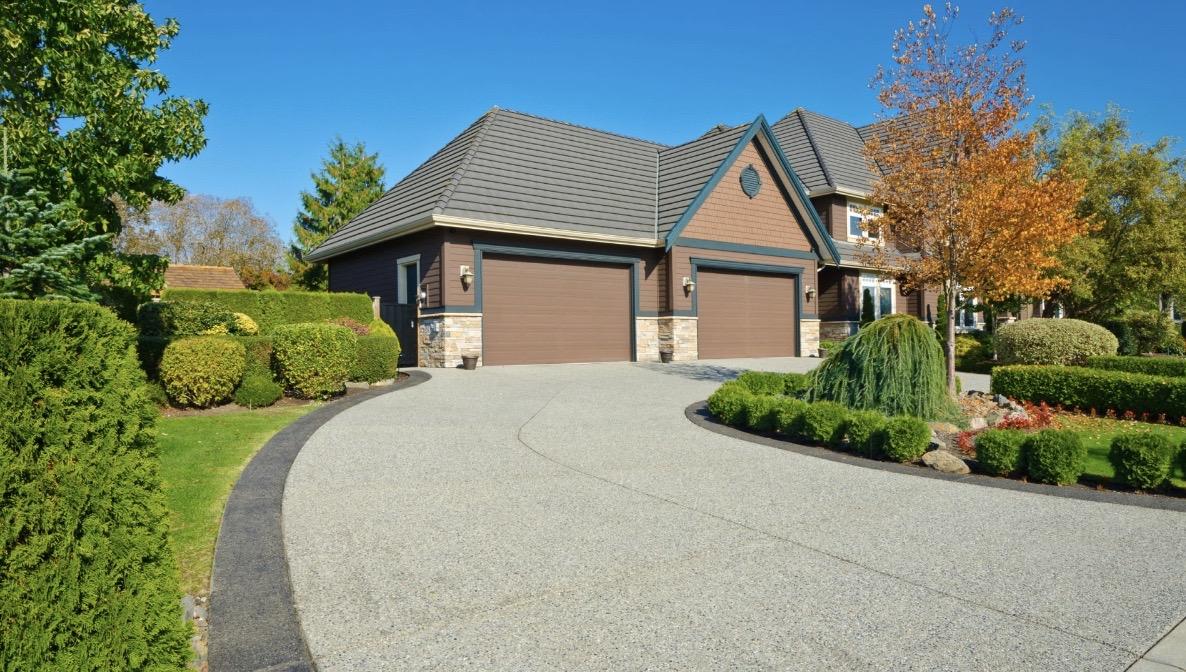Articles > Library

What you need to know about the weather in apple valley ca
What you need to know about the weather in Apple Valley CA
Nestled in the picturesque high desert region of Southern California, Apple Valley boasts a unique climate that blends desert characteristics with influences from nearby mountain ranges. For residents and visitors alike, understanding the weather patterns in Apple Valley is essential for planning outdoor activities, preparing for seasonal changes, and staying safe. From scorching summers to chilly winters, here's what you need to know about the weather in Apple Valley.
The High Desert Climate:
Apple Valley, like much of the Mojave Desert, experiences a high desert climate characterized by hot summers, mild winters, and low humidity levels. Situated at an elevation of approximately 3,000 feet (914 meters) above sea level, the town's climate is influenced by its desert location and proximity to the San Bernardino Mountains.
Seasonal Variations:
Summer (June - August):
Summers in Apple Valley are notoriously hot, with daytime temperatures often exceeding 100 degrees Fahrenheit (38°C) and occasionally reaching 110 degrees Fahrenheit (43°C) or higher. July tends to be the hottest month, with clear skies and minimal rainfall. While the days are scorching, evenings offer some relief with cooler temperatures.
Autumn (September - November):
Autumn brings relief from the summer heat as temperatures gradually cool down. Daytime highs range from the mid-80s to the low 90s Fahrenheit (around 29-34°C), making it an ideal time to explore outdoor attractions such as the nearby Mojave Narrows Regional Park. However, occasional Santa Ana winds can bring dry, gusty conditions to the region.
Winter (December - February):
Winters in Apple Valley are mild compared to other parts of the country but can still feel chilly, especially at night. Daytime temperatures typically range from the mid-50s to the low 60s Fahrenheit (around 12-17°C), with cooler evenings dropping into the 30s and 40s Fahrenheit (around 1-9°C). While snow is rare in the valley itself, nearby mountain ranges may experience snowfall during the winter months.
Spring (March - May):
Springtime in Apple Valley is characterized by gradually warming temperatures and blooming desert wildflowers. Daytime highs increase from the mid-60s to the mid-70s Fahrenheit (around 18-24°C), making it an excellent time for outdoor activities such as hiking and sightseeing. However, spring is also prone to occasional windstorms and dust devils.
Rainfall Patterns:
Apple Valley receives minimal rainfall throughout the year, with the majority of precipitation occurring during the winter months. The average annual rainfall is around 6 inches (15 cm), with most of it concentrated between December and March. While rainfall is infrequent, occasional thunderstorms may occur during the summer months, bringing brief but intense downpours.
Unique Weather Phenomena:
Santa Ana Winds:
Like much of Southern California, Apple Valley is susceptible to Santa Ana winds, dry and warm winds that originate from the Great Basin region. These winds typically occur during the fall and winter months and can bring dry, gusty conditions to the region, increasing the risk of wildfires and exacerbating fire weather conditions.
Dust Storms:
During periods of strong winds, Apple Valley may experience dust storms, also known as haboobs. These intense dust storms can reduce visibility and create hazardous driving conditions. It's essential to exercise caution and avoid driving during dust storms whenever possible.
Weather Preparedness:
While Apple Valley enjoys relatively mild weather compared to other desert regions, it's essential to be prepared for extreme temperatures and occasional weather hazards. Here are some tips to stay prepared:
Stay Hydrated: Drink plenty of water, especially during the hot summer months, to prevent dehydration.
Protect Yourself from the Sun: Wear sunscreen, sunglasses, and lightweight clothing to protect yourself from the sun's harmful rays.
Be Mindful of Fire Danger: During periods of high fire danger, avoid outdoor activities that could spark wildfires, such as campfires or fireworks.
Stay Informed: Keep an eye on local weather forecasts and advisories, especially during periods of extreme heat or high winds.
By understanding the weather patterns in Apple Valley and staying prepared, residents and visitors can make the most of their time in this beautiful desert community while staying safe and comfortable year-round. So whether you're exploring the scenic landscapes, enjoying outdoor recreation, or simply soaking up the desert sunshine, embrace all that Apple Valley has to offer while staying weather-wise.

Image Reference: https://en.wikipedia.org/wiki/Apple_Valley,_California
Questions and Answers for Apple Valley CA
Q: What are the typical summer temperatures in Apple Valley, California?
A: During the summer months, Apple Valley experiences scorching temperatures, with daytime highs often exceeding 100 degrees Fahrenheit (38°C) and occasionally reaching 110 degrees Fahrenheit (43°C) or higher.
Q: How does the weather in Apple Valley change during the autumn season?
A: Autumn brings relief from the summer heat as temperatures gradually cool down. Daytime highs range from the mid-80s to the low 90s Fahrenheit (around 29-34°C), making it an ideal time to explore outdoor attractions such as Mojave Narrows Regional Park.
Q: What are the typical daytime temperatures in Apple Valley during the winter months?
A: Winters in Apple Valley are mild but can feel chilly, especially at night. Daytime temperatures typically range from the mid-50s to the low 60s Fahrenheit (around 12-17°C), with cooler evenings dropping into the 30s and 40s Fahrenheit (around 1-9°C).
Q: How much rainfall does Apple Valley typically receive each year?
A: Apple Valley receives minimal rainfall throughout the year, with an average annual rainfall of around 6 inches (15 cm). Most of the precipitation occurs between December and March, with occasional thunderstorms during the summer months.
Q: What weather hazards should residents of Apple Valley be prepared for?
A: Residents of Apple Valley should be prepared for extreme temperatures during the summer months, occasional windstorms, dust storms (haboobs), and the potential for wildfires, especially during periods of high fire danger exacerbated by Santa Ana winds.
More Articles


Contact Us
Service Hours
Social Media
Articles > Library

What you need to know about the weather in apple valley ca
What you need to know about the weather in Apple Valley CA
Nestled in the picturesque high desert region of Southern California, Apple Valley boasts a unique climate that blends desert characteristics with influences from nearby mountain ranges. For residents and visitors alike, understanding the weather patterns in Apple Valley is essential for planning outdoor activities, preparing for seasonal changes, and staying safe. From scorching summers to chilly winters, here's what you need to know about the weather in Apple Valley.
The High Desert Climate:
Apple Valley, like much of the Mojave Desert, experiences a high desert climate characterized by hot summers, mild winters, and low humidity levels. Situated at an elevation of approximately 3,000 feet (914 meters) above sea level, the town's climate is influenced by its desert location and proximity to the San Bernardino Mountains.
Seasonal Variations:
Summer (June - August):
Summers in Apple Valley are notoriously hot, with daytime temperatures often exceeding 100 degrees Fahrenheit (38°C) and occasionally reaching 110 degrees Fahrenheit (43°C) or higher. July tends to be the hottest month, with clear skies and minimal rainfall. While the days are scorching, evenings offer some relief with cooler temperatures.
Autumn (September - November):
Autumn brings relief from the summer heat as temperatures gradually cool down. Daytime highs range from the mid-80s to the low 90s Fahrenheit (around 29-34°C), making it an ideal time to explore outdoor attractions such as the nearby Mojave Narrows Regional Park. However, occasional Santa Ana winds can bring dry, gusty conditions to the region.
Winter (December - February):
Winters in Apple Valley are mild compared to other parts of the country but can still feel chilly, especially at night. Daytime temperatures typically range from the mid-50s to the low 60s Fahrenheit (around 12-17°C), with cooler evenings dropping into the 30s and 40s Fahrenheit (around 1-9°C). While snow is rare in the valley itself, nearby mountain ranges may experience snowfall during the winter months.
Spring (March - May):
Springtime in Apple Valley is characterized by gradually warming temperatures and blooming desert wildflowers. Daytime highs increase from the mid-60s to the mid-70s Fahrenheit (around 18-24°C), making it an excellent time for outdoor activities such as hiking and sightseeing. However, spring is also prone to occasional windstorms and dust devils.
Rainfall Patterns:
Apple Valley receives minimal rainfall throughout the year, with the majority of precipitation occurring during the winter months. The average annual rainfall is around 6 inches (15 cm), with most of it concentrated between December and March. While rainfall is infrequent, occasional thunderstorms may occur during the summer months, bringing brief but intense downpours.
Unique Weather Phenomena:
Santa Ana Winds:
Like much of Southern California, Apple Valley is susceptible to Santa Ana winds, dry and warm winds that originate from the Great Basin region. These winds typically occur during the fall and winter months and can bring dry, gusty conditions to the region, increasing the risk of wildfires and exacerbating fire weather conditions.
Dust Storms:
During periods of strong winds, Apple Valley may experience dust storms, also known as haboobs. These intense dust storms can reduce visibility and create hazardous driving conditions. It's essential to exercise caution and avoid driving during dust storms whenever possible.
Weather Preparedness:
While Apple Valley enjoys relatively mild weather compared to other desert regions, it's essential to be prepared for extreme temperatures and occasional weather hazards. Here are some tips to stay prepared:
Stay Hydrated: Drink plenty of water, especially during the hot summer months, to prevent dehydration.
Protect Yourself from the Sun: Wear sunscreen, sunglasses, and lightweight clothing to protect yourself from the sun's harmful rays.
Be Mindful of Fire Danger: During periods of high fire danger, avoid outdoor activities that could spark wildfires, such as campfires or fireworks.
Stay Informed: Keep an eye on local weather forecasts and advisories, especially during periods of extreme heat or high winds.
By understanding the weather patterns in Apple Valley and staying prepared, residents and visitors can make the most of their time in this beautiful desert community while staying safe and comfortable year-round. So whether you're exploring the scenic landscapes, enjoying outdoor recreation, or simply soaking up the desert sunshine, embrace all that Apple Valley has to offer while staying weather-wise.

Image Reference: https://en.wikipedia.org/wiki/Apple_Valley,_California
Questions and Answers for Apple Valley CA
Q: What are the typical summer temperatures in Apple Valley, California?
A: During the summer months, Apple Valley experiences scorching temperatures, with daytime highs often exceeding 100 degrees Fahrenheit (38°C) and occasionally reaching 110 degrees Fahrenheit (43°C) or higher.
Q: How does the weather in Apple Valley change during the autumn season?
A: Autumn brings relief from the summer heat as temperatures gradually cool down. Daytime highs range from the mid-80s to the low 90s Fahrenheit (around 29-34°C), making it an ideal time to explore outdoor attractions such as Mojave Narrows Regional Park.
Q: What are the typical daytime temperatures in Apple Valley during the winter months?
A: Winters in Apple Valley are mild but can feel chilly, especially at night. Daytime temperatures typically range from the mid-50s to the low 60s Fahrenheit (around 12-17°C), with cooler evenings dropping into the 30s and 40s Fahrenheit (around 1-9°C).
Q: How much rainfall does Apple Valley typically receive each year?
A: Apple Valley receives minimal rainfall throughout the year, with an average annual rainfall of around 6 inches (15 cm). Most of the precipitation occurs between December and March, with occasional thunderstorms during the summer months.
Q: What weather hazards should residents of Apple Valley be prepared for?
A: Residents of Apple Valley should be prepared for extreme temperatures during the summer months, occasional windstorms, dust storms (haboobs), and the potential for wildfires, especially during periods of high fire danger exacerbated by Santa Ana winds.
More Articles

Contact Us
760-512-8091
16790 Danbury ave
Hesperia, CA, 92345
Service Hours
Mon-Fri: 8am-5pm
Sat-Sun: 8am-5pm
Social Media






